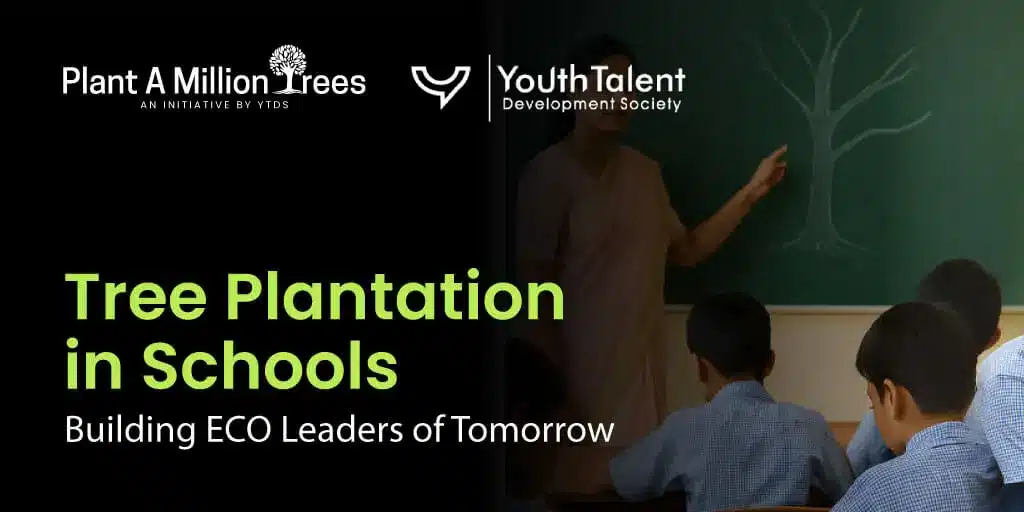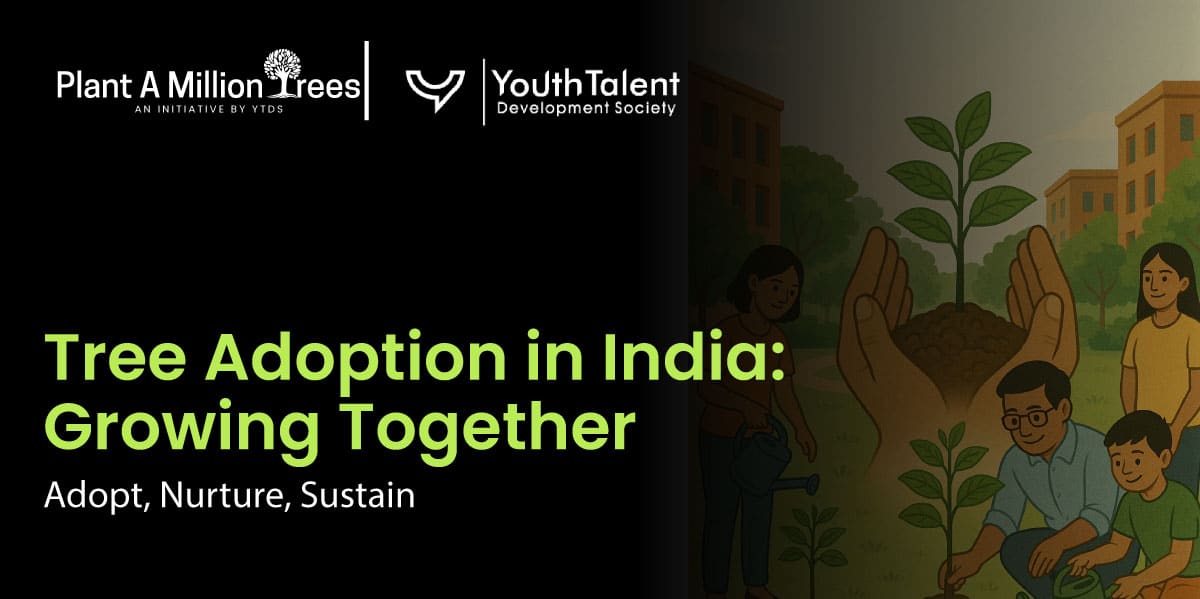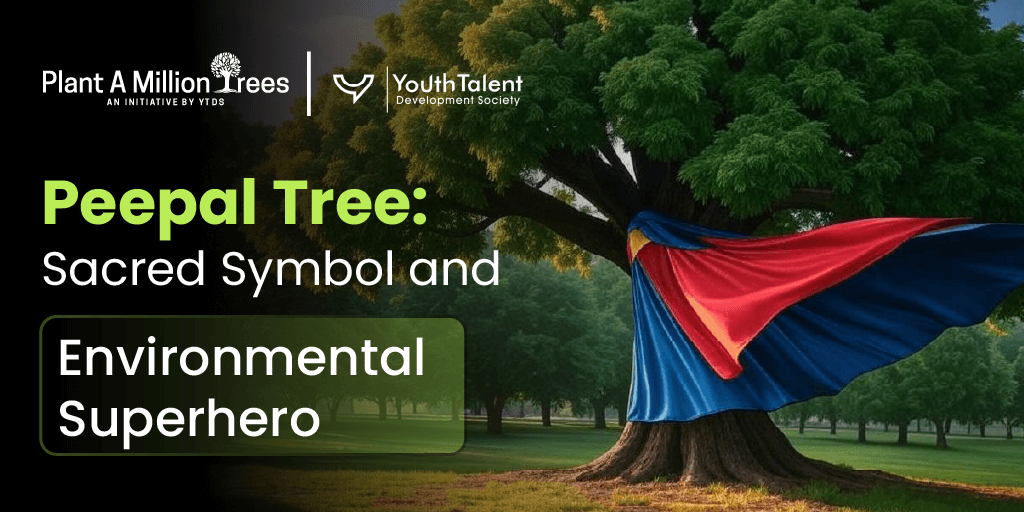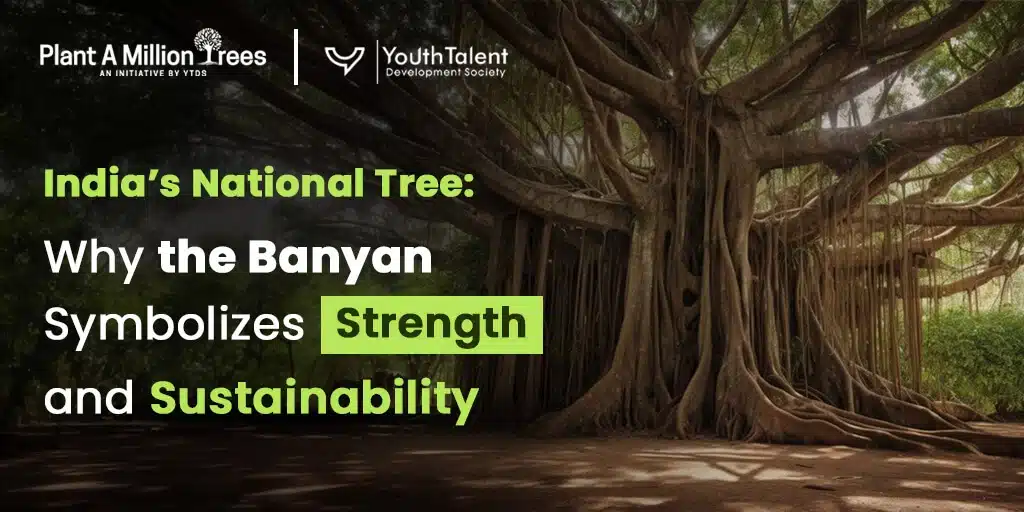Amidst the concrete jungles of modern India, with towers of glass and highways of veins, there also is something...
Consider a morning in India, in which students are not only withholding books, but also planting saplings in the school grounds. Not only do they learn equations and grammar, but the soil, the sunshine, and how long it takes a seed to grow to a tree.
In a nation that struggles to cope with global warming and increasing pollution and green cover degradation, school tree plantation in India is not only an extra-curricular activity- but it is a must.
Through the use of environmental education as part of the basic curriculum, schools will be able to produce environmentally aware, responsible and prepared future generations.
The relevance of tree plantation in school curriculum is beyond what words can say. It helps children get in touch with nature, teaches them habits of being eco-responsible in life, and demonstrates how even the smallest steps can be taken to create a greener future.
Schools are not merely schools of knowledge but also schools of values. And what better thing to invest in early than the love and care of trees?
Why Schools Play a Vital Role
Habits start in schools. Childhood forms the background of all actions in future and the introduction of educational tree planting in childhood brings a cascading effect which is experienced throughout life.
Students also absorb values of care, patience, and accountability when they learn to nurture saplings, water them regularly, and watch them grow.
There is a large population of school-going children in India. This implies that the opportunity of planting trees in schools India is enormous. When tree plantation is implemented as a program in all schools, the effect on the environment of the country will be revolutionary.
Environmental ethics is also made personal by planting trees in schools. But to read about deforestation in a textbook is one thing, and then to touch the cool shade of a tree you planted three years ago is another.
The sensory association of touching the ground, breathing in fresh air, hearing birds nest in the trees, makes abstract knowledge actual life knowledge. That is why schools are the most appropriate place to begin bringing up eco-conscious citizens.
Benefits of Tree Plantation in Schools
The advantages of plantation of tree on the school grounds India extend much more than the greening of the school grounds. There are six main benefits:
Practical Education
Books may spell out the process of photosynthesis, and planting a tree will show how this works. Planting trees in schools is a type of experience learning as students acquire the knowledge in Science and Geography that is connected with the practical outdoor eco-education.
Local Biodiversity
The planting of local plants native species in schools increases local biodiversity. Such trees also help attract pollinators, create bird habitat, and ecologically balance the urban and semi-urban areas.
Mental Health and Well-being
Research has repeatedly demonstrated that when children spend time in green areas they experience reduced levels of stress, improved concentration and are more creative. Not only the intellectual but also the emotional development is cultivated in a green campus.
Community Bonding
Forest planting movements are mass events. Students, teachers, and even parents collaborate and work in teams as well as are responsible. The days of planting regularly turn into unity and learning celebrations.
Patience and Responsibility values.
It is slow to grow a tree. Students are taught that change is not an overnight event, and it requires time and effort, which teaches them resilience and the ability to think long-term.
Climate Action Awareness
Every sapling planted is an act of deforestation and climate change. Children start to consider themselves the agents of positive environmental change.
The benefit of planting trees in school curriculum is that it provides an opportunity to bridge theory, practice, and values, all in one activity.
How to Integrate It into Curriculum
Plantation of trees in schools India cannot be regarded as a single day event. In order to make a real impression, it has to be incorporated in academics and co-curricular activities. Some practical solutions are the following:
- Project-Based Learning: Science, Geography, and Environmental Studies may involve tree plantation projects in which students learn about soil conditions, track their growth, and report their observations.
- Monthly Tree Drives: Schools can have one day each month of student tree drives, where classes plant new saplings or tend to existing ones.
- Eco Clubs: Have eco clubs that own green activities-watering, composting and campus clean up.
- Nature Journaling: Have students maintain journal records of the growth, seasonal variations and biodiversity of their tree.
- Value Education Integration: Be connected to values such as patience, responsibility and harmony with nature.
With educational tree planting becoming a regular activity and a part of school life, we are reinforcing the message on a regular basis and not making it an event once a year.
Examples from India & the World
There are already some schools that have set up impressive precedents of including the tree plantation in their educational model in India and world over.
Green Campuses in India:
In metropolitan areas such as Pune, Delhi and Bengaluru, schools have organized large-scale student tree planting activities to build mini-forests in their campuses. These schools are living laboratories where students get to see the effect of green practices first hand.
Youth Talent Development Society (YTDS):
YTDS has collaborated with schools to establish the Plant a Million trees program in which students directly participate in the greening of their campuses and the communities in which they live.
Having already planted tens of thousands of saplings, this initiative demonstrates the effectiveness of mobilizing the youth to take action against the environment.
Global Eco-Schools Program:
On a global scale, the Eco-Schools program involves learners in projects which integrate education with sustainability. Schools in this program are reporting an increase in student interest and an increase in environmental awareness.
The above models demonstrate that tree plantation in schools India is not only possible, but extremely effective when done in an organized manner and community participation.
Overcoming Challenges
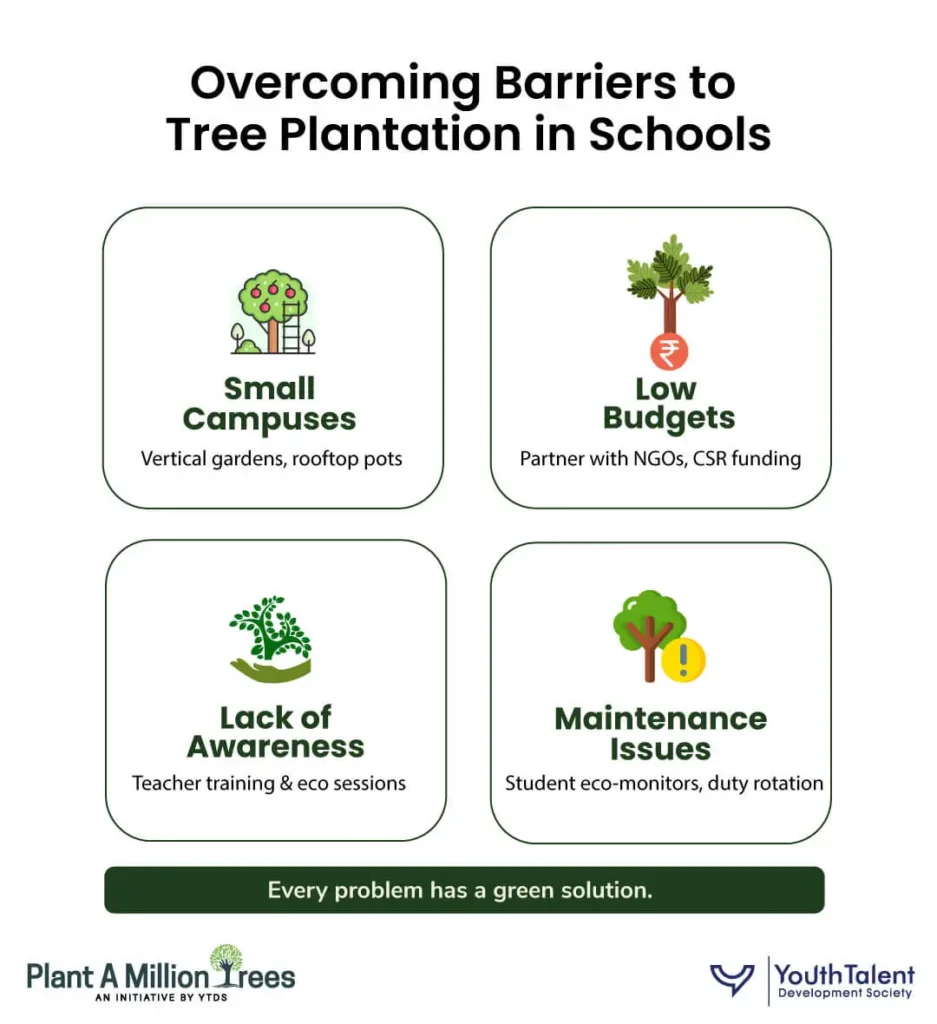
Although it has the above advantages, barriers to the adoption of tree plantation as a school activity do exist. Common challenges include:
Space: Urban schools typically have a problem with small campuses.
Solution: Use vertical greening, rooftop gardens and potted greens to make maximum use of available space.
Financial factors: Most schools feel that they cannot afford plantation drives.
Solution: Work through NGOs, nurseries and local municipal authorities to receive saplings and resources at minimal or no expense.
Ignorance: Teachers and parents might not be completely aware of the value of planting trees in the long run.
Solution: Have awareness programs and invite environmentalists to do training.
Maintenance issues: Trees are simple to plant, but not to take care of.
Solution: Have student eco-monitors assigned to be in charge of particular trees and switch duties by class.
Schools can overcome such challenges by implementing innovative solutions that make their green programs sustainable and effective.
Role of Parents & Communities
Planting of trees in schools India cannot rely on the students. Communities, parents and NGOs should play their part as well.
- Parental engagement: Parents will get the opportunity to engage their children by planting saplings on their behalf, maintaining trees or attending a plantation drive.
- NGO Collaboration: NGOs such as the Youth Talent Development Society (YTDS) possess expertise, resources, and networks that schools might not have.
- Local Nurseries & CSR: Corporations have the opportunity to fund tree planting at schools in their Corporate Social Responsibility (CSR).
- Community Drives: Schools may work with neighborhood associations to increase the green effect outside their campuses.
Planting trees is not merely a matter of greenery- but rather a matter of creating green communities. The students get to internalize the concept of generational environmental responsibility when they observe adults get involved.
Conclusion
Tree plantation in schools India is more than an activity, it is a movement toward building an eco-conscious nation. By integrating educational tree planting into daily routines, students not only learn about the environment but also become protectors of it.
Schools that adopt these programs go beyond academic excellence; they shape citizens capable of tackling climate challenges with responsibility and resilience.
The importance of tree plantation in school curriculum is not just about planting today; it is about ensuring a greener, safer tomorrow. Every sapling planted by a student carries within it the promise of clean air, shaded streets, and a planet that sustains life.
As educators, principals, and parents, the responsibility lies with us. Let us support student tree drives, encourage hands-on eco-learning, and work with organizations like Youth Talent Development Society (YTDS) to ensure every school in India becomes a green campus. Together, we can raise not just students, but eco leaders of tomorrow.

